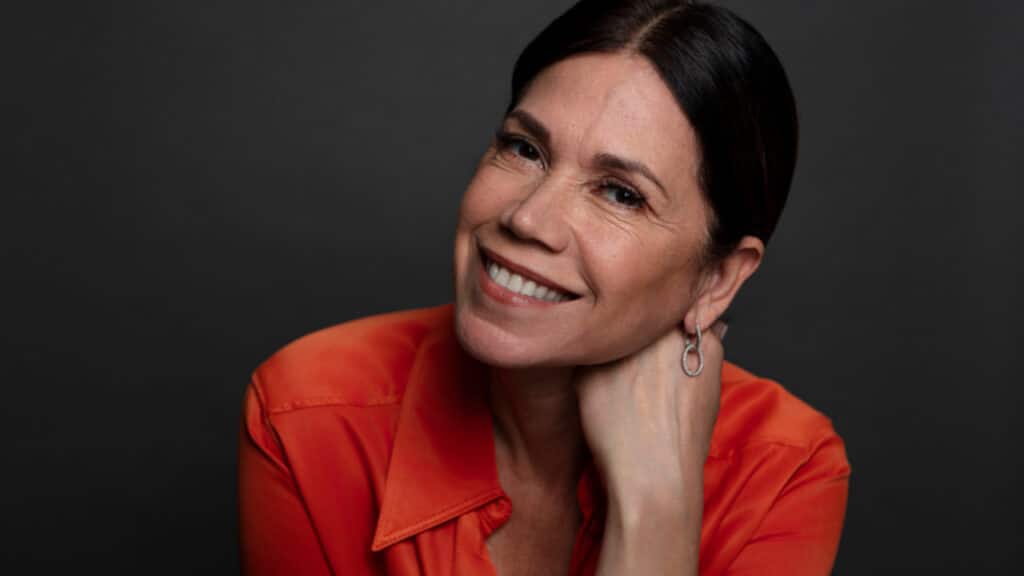Meet the Latina Engineer Behind GE Appliances’ New Spanish-Language Washer and Dryer
For Latinos, the home is a sacred place. From the kitchen, where we learn about our roots, to the routines Mamá has maintained to teach us how to cope with life, Latino homes are fundamental to our culture. And what would those homes be without their appliances?
Well, now, a Latina is behind GE Appliances’ innovation. The Haier company is launching its all-new Spanish-language washer and dryer.
And this is not a minor feat. After all, more than 50% of households in the U.S. have GE Appliances in their homes today. However, to stay true to that, companies must create products that will work in all homes. Especially as consumer demographics become more diverse.
Enter Latina engineer Monica Martinez
Monica Martinez grew up in San Juan. The Latina, now based in Louisville, Kentucky, moved to the United States by herself to pursue a college education. “This forced me to push myself to ensure I succeeded,” Martinez told FIERCE. “It was really hard in the beginning, but little by little, I started adapting.”
She believes her experience gives her an advantage in perspective when tackling a problem. “I am able to see it from multiple sides and not think in a ‘traditional way,'” she said. “I am known for thinking outside the box, which has always helped when tackling design challenges.”

As a Senior Design Engineer in GE’s laundry division, one of those challenges was to make a concerted effort to better understand Latino customers and how they approach doing their laundry.
And Martinez was up to the task. After all, she followed her parents’ advice: “If you are going to do something, do it well.”
When a thriving demographic changes the rules of the game
The Census data predicts Latinos in the U.S. will account for 70% of new homeowners over the next 20 years. Aware of that fact, Martinez and her team knew having a Spanish-language interface was extremely important. “No one wants to second-guess what load they are selecting when doing laundry,” she explained.
“Growing up, I remember seeing the cycle ‘Perm Press’ on our washer. And we never used it since we didn’t know what it meant,” Martinez remembered. “I would always joke saying, ‘Are my clothes going to come out hard like a cookie if I select this cycle?’ Now that I’m in the laundry business, I know what it means. But thinking back, this is crucial. Because we want our consumers to be able to use their washer to its full potential versus partially using their appliance.”

However, the GE Appliances engineering team didn’t want their new products to just be a translation from English. “We wanted to offer thoughtful features that reflect how Latino consumers do laundry,” Martinez explained. She remembered how she learned to pre-treat stains from her mother in a small bucket with Oxi powder, detergent, or bleach.
“This is why the wash modes’ añadir remojo’ and ‘más intenso’ are so important,” she added about the new features on GE Appliances. “Because ‘añadir remojo’ adds soaking time and ‘más intenso’ adds soaking time and extra agitation power to simulate the scrubbing. We are not modifying how the laundry process is done. But we are simplifying it to make it easier to do laundry.”
Furthermore, Martinez and her team recognized that the traditional Latino family unit is changing. Today, multigenerational living with more family members under the same roof is increasingly common. For her team, this meant creating a washer large enough—4.5 cu ft—to allow larger wash loads instead of having to do multiple loads.
How diversity and inclusion can make an industry look things differently
For Monica Martinez, proving that a well-established company like GE Appliances needed to pivot required a lot of research. While the process usually implies locking down a new concept and collaborating with cross-functional teams, designing the all-new Spanish-language washer and dryer involved the Latin Roots Employee Resource Group.
The Latin Roots Employee Resource Group at GE Appliances offers learning, coaching, volunteering, and networking opportunities to a vibrant and diverse group of 250 Hispanic employees and allies at GE Appliances.
Martinez explained they collaborated during the design stage “to help us ensure we had a ‘universal’ Spanish language on our control panel.”

“It was important to incorporate universal Spanish into the product to ensure it was accessible to as many Spanish speakers as possible, regardless of their heritage or nationality,” she explained. “In the U.S., there are about five different Spanish dialects that are most common. So, we wanted to make sure our washer and dryer interface and manuals used the most universal terms for certain items or actions.”
They then used the words for the cycles that resonated with everyone at the Latin Roots Employee Resource Group, which is composed of multiple Spanish-speaking countries.
She added they worked closely with their software engineers. They wanted to develop the custom wash modes that are specific to these units. “Another aspect that was different is that I wrote the literature manuals from scratch in Spanish and with input from several colleagues from other Spanish-speak countries to ensure I used universal Spanish language,” she said.

A new trend in appliance manufacturing?
Martinez’s team’s approach at GE Appliances is nothing short of revolutionary. Their Latin Roots Employee Resource Group offered crucial feedback on translation, visuals, and features. But they went further. They also co-created products and services, effectively integrating the voice of the Latino customer into their offerings.
“It was incredibly motivating for the group to be involved in this product development and share their insights to help GE Appliances develop a better product,” Martinez explained. “Plus, it offered additional visibility of our members with others in the organization, which was great for morale and career growth.”
Furthermore, this new process highlighted why retailers and manufacturers must listen to their customers.
“Consumers in the U.S. are changing, and we’ve adapted to those changes by evolving our product lineup to be more accessible to everyone,” Martinez concluded. “There are more than 62.1 million Latinos living in the U.S., and even within that, you have a blend of different cultures from throughout Latin America. It’s important for us as manufacturers to be cognizant of that when we develop our products because ‘one-size-fits-all’ simply won’t do for our increasingly diverse consumer demographics.”




